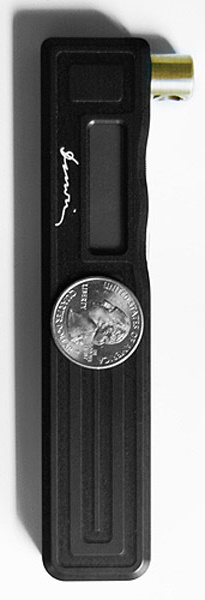Evolv History
In the autumn of 2008, Brandon Ward, a 39-year-old who smoked two packs of cigarettes daily, purchased an e-cigarette after a friend expressed concern for his health. Eager to quit smoking, he had previously tried various nicotine replacement therapies and medications without success. However, after trying the e-cigarette, he was able to quit smoking entirely. He recognized the technology as a potentially safer alternative to traditional cigarettes and was excited about its possibilities.
With limited knowledge of electronics, Brandon reached out to John Bellinger, a local engineer who owned a business focused on designing and manufacturing control electronics. Initially, John was reluctant to meet with inventors, especially those without financial resources, but eventually agreed to a meeting after Brandon's persistence.
John had some insight into the e-cigarette industry, having sold power converters to enthusiasts who modified them for their own e-cigarette projects. During their first meeting, Brandon asked John to create an improved version of the existing e-cigarette. John, somewhat rhetorically, questioned the need for such improvements, as he recognized that the control systems available at the time did not address the actual needs of users. E-cigarettes in 2010 offered limited control, and the options that did exist often missed the mark. This initial meeting ultimately led to the founding of Evolv, where Brandon and John set out to transform the e-cigarette landscape.
Ground- Breaking Achievements
The first technological innovation Evolv introduced to the market came out of that initial meeting, regulated power control (wattage). E-cigarettes to that point had offered only voltage control as a means of adjusting the intesity and amount of vapor. This meant constant adjustment of voltage as the atomizer aged or when a new atomizer was attached. Power regulation ensured a consistent experience regardless of changes in the atomizer. To introduce this new technology to the market, Evolv, in December of 2010, released the Darwin E-cigarette. The Darwin was notable not just as the first wattage-controlled e-cigarette but it was the first to have an LCD screen and onboard regulated charging. By 2012, most of the e-cigarette market had adopted Evolv’s regulated power technology.
In 2012 Evolv introduced the Kick drop-in module and subsequently in 2013 the Kick2 drop-in module. The Kick and Kick2 were notable because they brought battery safety to an entire category of already existing e-cigarettes, the mechanical mod. Mechanical mods were (and still are) metal tubes which accept user replaceable LiPo batteries and offer the user no protective features. The Kick and Kick2 allowed the user to set a fixed output power that would not over-tax the battery and mitigated battery shorting and over-discharging both of which are causes of catastrophic battery failure.
By 2013, Evolv was widely recognized as the e-cig tech leader and was receiving inquiries from other manufacturers requesting use of Evolv technologies in their e-cigarette products. Since Evolv’s ability to make circuit boards far exceeded their ability to assemble consumer products they released a line of circuit boards called DNA. The DNA line of circuit boards allowed e-cig manufacturers from all over the world to produce Evolv technology powered e-cigarette products, containing DNA boards, under their own brand. The Evolv DNA line of boards brought a level of safety, consistency and reliability to these e-cig manufacturer’s product lines that were not present previously.
